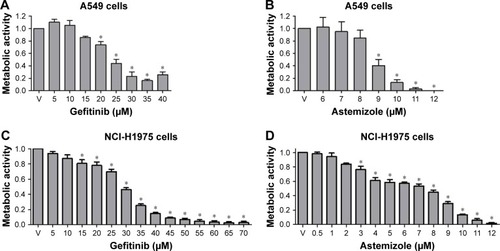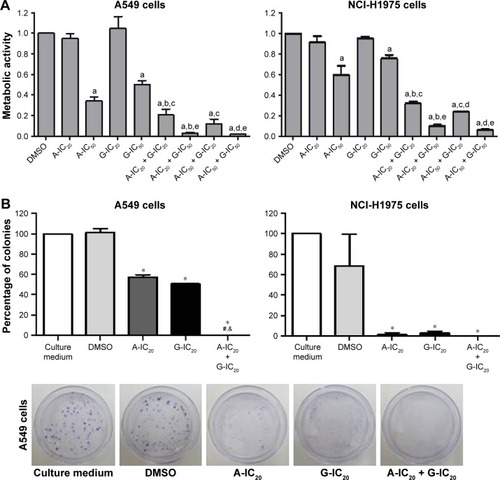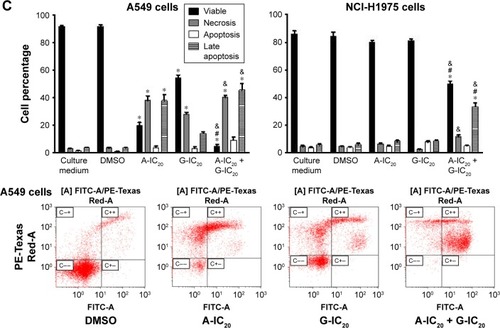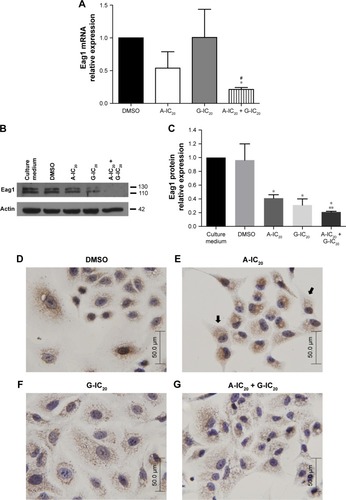Figures & data
Figure 1 Effect of astemizole or gefitinib on the metabolic activity of lung cancer cells.

Table 1 Inhibitory concentrations (ICs) of astemizole or gefitinib in the proliferation of human lung cancer cells
Figure 2 Enhanced effect of the combination astemizole–gefitinib on the metabolic activity, survival and apoptosis of lung cancer cells.
Abbreviations: A, astemizole; G, gefitinib; FACS, fluorescence-activated cell sorting.


Figure 3 The combination astemizole–gefitinib downregulates Eag1 expression in A549 cells.
Abbreviations: A, astemizole; G, gefitinib.

